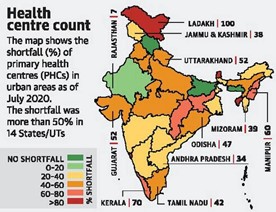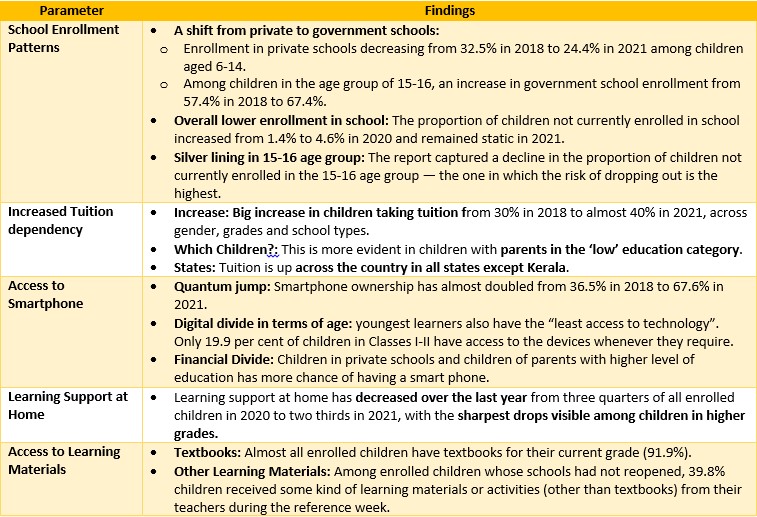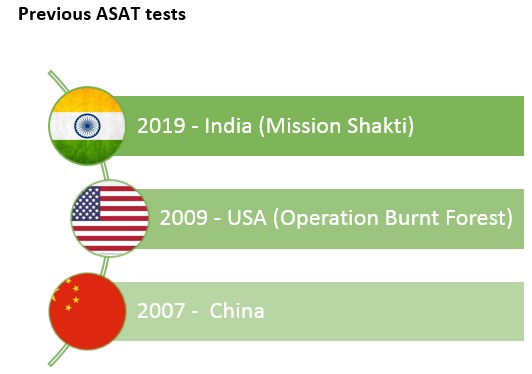Wednesday, 3rd November 2021
PSB staff accountability
In News
The Finance Ministry has issued new guidelines to guide state-owned banks in adopting a uniform Staff Accountability Framework for non-performing assets (NPAs) up to Rs 50 crore.
About the News
- About the Guidelines: The aim of the new norms is to protect employees for their bona fide actions and at the same time make them accountable for any wrongdoing or any inaction on their part.
- The guidelines will be implemented with effect from April 1, 2022, for accounts that turn NPAs beginning the next financial year.
- It advises public-sector banks to revise their staff accountability policies and frame procedures with approval of their respective boards.
What is the New Framework?
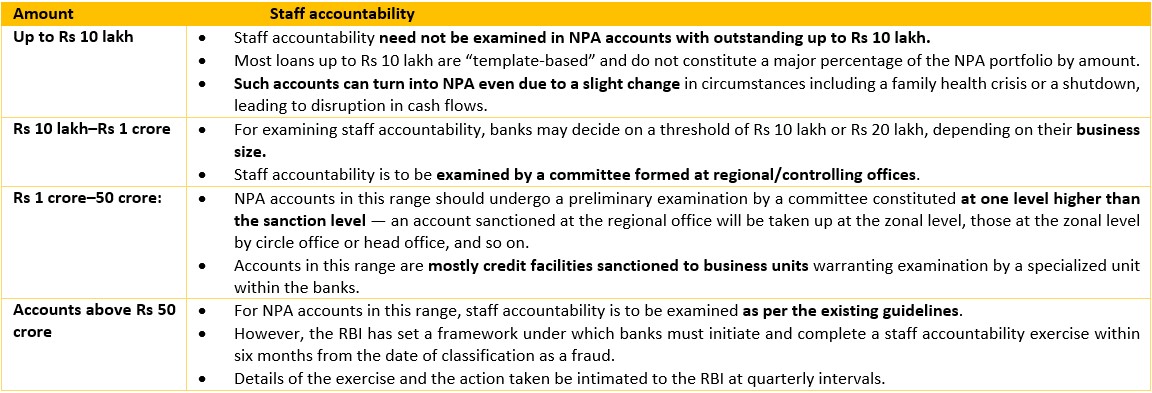
Need for the new framework
- Slow decisions on credit sanctions: Series of frauds led to an environment in which PSU banks became extremely cautious and risk -averse on decisions on credit sanctions.
- Bankers fear the 3Cs – CBI (Central Bureau of Investigation), CVC (Central Vigilance Commission) and CAG (Comptroller and Auditor General) as they may come after them if the accounts turn NPA.
- Protect Bonafide action: To protect bankers from undue harassment from probes into their lending decisions and remove their fears of being investigated for bona fide business decisions gone wrong.
- Stalling credit growth: Bankers reluctance about taking exposure in new units or projects stalled credit deployment as small units. This has adversely affected the economic growth.
- Strain on bank’s resources: The above fears puts a huge strain on the bank’s resources as punitive action needs to be taken against the officers having mala fide intent/involvement, but it is also essential to ensure that bona fide mistakes are dealt with compassion.
- No uniform framework: Currently, different banks are following different procedures for staff accountability exercises in respect of all accounts that turn NPA.
Sources:
Prompt Corrective Action (PCA) Guidelines
In News
The RBI has revised the PCA framework for Scheduled Commercial Banks, which would come to effect from 1 Jan 2022.
About the News
- As per the new framework, a bank will generally be placed under PCA Framework based on the Audited Annual Financial Results and the ongoing Supervisory Assessment made by RBI.
- Capital, Asset Quality and Leverage will be the key areas for monitoring in the revised framework.
- The PCA framework would apply to all banks operating in India including foreign banks operating through branches or subsidiaries based on breach of risk thresholds of identified indicators.
- RBI said negative return on assets (RoA) criteria for determining risk threshold removed in the revised rules.
Details of the New PCA Framework
- Parameters: Indicators to be tracked for Capital, Asset Quality and Leverage would be CRAR/ Common Equity Tier I Ratio, Net NPA Ratioand Tier I Leverage Ratio
- Trigger points: If CRAR falls below a certain level, RBI initiates Risk Threshold 1 and asks the designated bank to submit a capital restoration plan, restrict dividend payments, etc.
- Similarly, if the NPA levels rise beyond a certain range or leverage falls below a certain range, RBI initiates Risk Threshold 1.
- For further aggravated financial conditions, Risk Threshold 2 and 3 are initiated.
- It could include bringing in a new management, appointing consultants for business restructuring, taking steps to change ownership/merger, impose a moratorium on the bank or credit-risk management policies to reduce loan concentration
- Exit provisions: The bank would be permitted to exit PCA framework if no breaches in risk thresholds in any of the parameters are observed as per four continuous quarterly financial statements.
- It would be based on supervisory comfort of the RBI, including an assessment on sustainability of profitability of the bank.

About the PCA
- The RBI’s PCA Framework was introduced in December 2002 as a structured early intervention mechanism for banks along the lines of the US Federal Deposit Insurance Corporation’s PCA framework.
- The objective of the PCA framework is to enable supervisory intervention at appropriate time and require the supervised entity to initiate and implement remedial measures in a timely manner, so as to restore its financial health.
- The regulator imposes restrictions like curbs on lending on banks with increased vulnerability in financial ecosystem. The PCA Framework applies only to commercial banks and does not cover cooperative banks and non-banking financial companies.
- The restrictions enable supervisory intervention, initiate and implement remedial measures in a timely manner to restore bank’s financial health.
Sources:
Public Affairs Index rankings 2021
In News
Public Affairs Index 202, the 6th edition of the flagship Project of the Public Affairs Centre, was recently released.
- PAI 2021 ranks the States and Union Territories on the basis of their performance in the Sub-national governance for the overarching sustainable development pillars of Equity, Growth and Sustainability.
- PAI 2021 constitutes of 3 Pillars (Equity, Growth and Sustainability), 5 Themes (Voice and Accountability, Government Effectiveness, Regulatory Quality, Rule of Law and Control of Corruption), 14 SDGs (SDG- 1,2,3,4,5,6,7,8,9,10,11,12,15 and 16) and 43 Indicators.
- This year the report has included two new components apart from the Governance Model- Scheme Analysis and the COVID-19 Response Index.
- The COVID-19 Response Index subsumes 2 thematic areas - Preparedness and Containment containing 4 and 3 indicators respectively.
- It also features analysis of five Centre-sponsored schemes that aid in key development parameters of health, education and livelihoods namely:
- Mahatma Gandhi Rural Employment Guarantee Scheme
- National Health Mission
- Integrated Child Development Services
- Samagra Siksha Abhiyan and
- Midday Meal Scheme
- The report also includes ranking of the states on the basis of their performance during the COVID-19 pandemic.
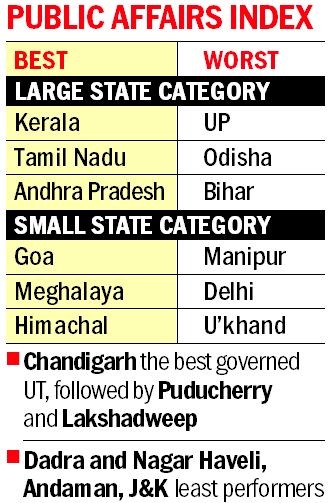
Highlights of the Report
- Overall Performance: Kerala was ranked first, while, Uttar Pradesh was the last ranked.
- Equity: The pillar of Equity examines the political economy of exclusion from the perspective of the states and UTs. The pillar subsumes all the five themes of PAI 2020 and uses 23 component indicators to assess performance on equity along three dimensions economic, social and gender.
- Gujarat was first, followed by Kerala. Odisha and Karnataka were ranked last.
- Growth: The Growth pillar dwells on India’s growth challenge and the concerns that need attention for sustainable development. The pillar subsumes two themes and uses 20 component indicators to rank the performance of states and UTs on growth.
- Kerala continues to lead the way in terms of growth rankings.
- Sustainability: The Sustainability pillar analyses the access to and usage of resources that has an impact on environment, economy and humankind. The pillar subsumes two themes and uses 7 indicators to measure the effectiveness of government efforts with regards to sustainability.
- Kerala tops here too.
Source:
This Day in History - Times of India
On November 3, 1838, the Times of India is an Indian English-language daily was launched. The journey of The Times of India started as The Bombay Times and Journal of Commerce. It was originally published to cater to the British residents of Western India. It was published twice a week on Wednesdays and Saturdays under the direction of Raobahadur Narayan Dinanath Velkar, a Maharashtrian Reformist. It is a national daily which is published from all the major cities of the country. It is the largest selling English newspaper in the world and the third-largest circulated newspaper in India. The Times of India is the second oldest newspaper in India still in circulation. It is owned and published by Bennett, Coleman & Co. Ltd. which is owned by the Sahu Jain family.
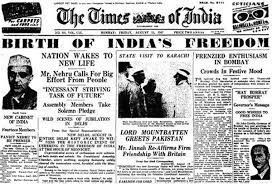
Source:
Image of the Day - Tug of War
Climate activists dressed as world leaders play tug of war during a protest at the Clyde Arc bridge during the Cop26 summit at Glasgow, UK. Informal reports and documents reveal the diverging interests of various participating governments and an increased opposition to the inaction and inadequate mechanism for climate action.
Green Crackers - Edukemy Current Affairs
- Context: The Delhi government will not allow any firecrackers, including “green crackers”, to be sold and used in the Capital in wake of Covid-19 and the deteriorating air quality.
- Green crackers are eco-friendly crackers that are manufactured from alternative raw materials to leave a lesser impact on the environment and pose lesser health risks.
- They don't contain aluminium, barium (Barium Nitrate is responsible for heavy smoke and emissions), potassium nitrate or carbon thus causing less air pollution (30% less polluting) than the regular variety.
- While regular crackers emit about 160 decibels of sound, green crackers have a sound level of 110-125 decibels.
- For all their advantages, these eco-friendly firecrackers are more expensive than the regular ones.

Source:
Relay planting, Strip cropping
- Context: A recent study has shown that integrated farming with intercropping increases food production while reducing environmental footprint. Example, Relay and Strip cropping.
- Relay Planting: Relay planting means the planting of different crops in the same plot, one right after another, in the same season. Examples: planting rice (or wheat), cauliflower, onion, and summer gourd (or potato onion, lady’s fingers and maize), in the same season.
- It is less risky as we do not have to depend on one crop alone. It also means better distribution of labour, less insects spread, and legumes adding nitrogen to the soil.
- Strip cropping: Strip cropping is where wheat is grown along with corn and soyabean, in the same farm in an alternative manner. In India, where there are large fields the land is divided into strips, and strips of grass are left to grow between the crops.
- Western Karnataka (and the nearby Telangana and Northern Tamil Nadu) which are the dry belts with frequent droughts, 80% of the farmers depend on strip cropping.
- These cropping patterns were found to increase the annual crop yield up by 15.6% to 49.9%, and decreased the environmental footprint by 17.3%, compared with traditional monoculture cropping.
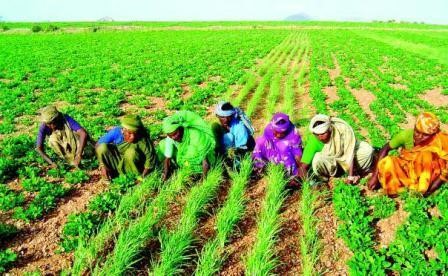
Source:
Invasive Alien Species
- Context: A number of environmentalists have come together to form a forum called Movement Against Biological Invasions (MABI) to curb the spread invasive alien species (IAS).
- MABI is a green movement aimed at systematically charting and rooting out invasive species.
- The Convention on Biological Diversity (CBD) defines IAS as “an alien species whose introduction and spread threaten ecosystems, habitats, or species with socio-cultural, economic and environmental harm and harm to human health”.
- The local food chain gets afflicted with the IAS competing for space and light with native flora. It is also a large threat to livestock health as it hampers the growth of native grasses which are fodder species for herbivores and livestock.
- It is baneful for soil health as it is prone to faster deterioration. Cosmos sulphureus, Lantana camara are some of the IAS species that cost huge sum of the farmers’ budget in eradicating them through spraying of insecticide.
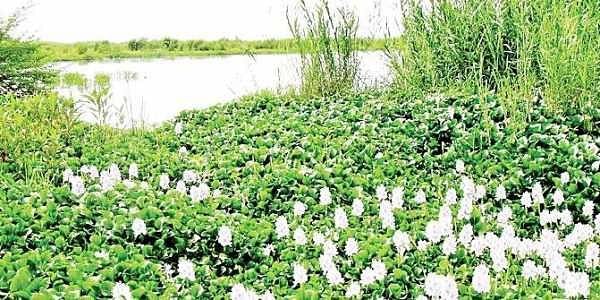
Source:
New Abortion Rules
- Context: The new abortion rules have been notified by the Government recently.
- The Medical Termination of Pregnancy Amendment Rules, 2021 have defined new categories of vulnerable women who are allowed termination up to 24 weeks upon meeting certain conditions and with the permission of two doctors.
- These include minors, survivors of sexual assault and those with foetal malformation among others.
- Others may seek abortion up to 20 weeks with the permission of one doctor upon meeting certain criteria.
- Earlier the permission of one doctor for termination up to 12 weeks, and two doctors for 12 to 20 weeks was required.
- The amended law also provides for setting up of State-level medical boards to decide if a pregnancy may be terminated after 24 weeks in cases of substantial foetal abnormalities.
- Globally, according to the Center for Reproductive Rights, India is behind 32 countries that allow abortion on request with varying gestational limits.

Source:
Ensuring that policy outcome matches the intent- IE
Essence: The article speaks about financial management system of the government highlighting the reality that a portion of government spending is lost between intent and outcome. It is due to corruption and limitations in the structural design of the Union and the state governments of India. The attention that policy differences get in legislature and political rallies is missing when it comes to debating the outcomes of policies and laws. Some of the limitations are- the final accounts for a financial year are presented to the legislature 18 to 24 months after that year’s budget is approved and archaic cash accounting followed by governments.
The author states that the Tamil Nadu government has taken steps to initiative to identify and retrieve unutilised funds and identified Rs. 2,000 crore of funds have been verified as “lapsed”. They are also establishing new procedures and systems to ensure that parking of funds cannot happen outside of the finance department’s oversight and undertaking data-integrity project to identify ghost beneficiaries.
Why you should read this article?
- To understand about the limitation for the mismatch between the policy intent and outcomes.
- To know about the steps being taken by the government of Tamil Nadu to overcome some of these limitations and their five-step approach for reform and improvements.
Source:
Trade and Climate: The Pivot for India US ties- TH
Essence: India and the United States have an opportunity to influence history of the 21st century by collaborating on two areas – climate and trade. Even though recent high level bilateral visits and attempts to forge partnerships shows signs of progress, many thorny issues like climate justice and issues in WTO remains to be ironed out. Failure to arrive at consensus by these two large democracies gives opportunity to China to dominate global affairs.
Climate action and trade reforms between India and USA are mutually connected and reinforcing. Transfer of technology and trade of items that aid climate reforms like solar panels, resolution of WTO dispute would go a long way to serve the cause. Concerted action on both the climate and trade fronts is mutually beneficial and will lend additional strength to the foundation of a true partnership for the coming century.
Why should you read this article?
- To appreciate historic opportunity India and US have, by forging an alliance on climate and trade related issues.
- To understand the progress made in this direction and conflicting interests of two countries on trade and climate related issues.
- To understand how trade and climate issues are interconnected and related.
Source:
Need to boost rainfed farming- HBL
Essence: The editorial focuses on productivity and nutrition benefits of crops in rainfed areas in India. According to the IPCC assessment, India may face climate extremes in the near future, making it critical to maintain and strengthen its food security. Because India is predominantly dependent on the south-west monsoon and has around half its agricultural area as rainfed, the country's sensitivity to climate change is exacerbated.
To address this, we must be prepared to adapt to climate change and mitigate it through agro-ecology. The methodology is adapt to climate change, utilise natural resources responsibly, and protect biodiversity. Agro-ecology as an important policy initiative, especially in rain-fed areas could lead to a brighter future in India’s agriculture sector. Seeds must be the starting point for such interventions, and markets must be the destination.
Why should you read this article?
- To gain a better understanding of India's agricultural climate change susceptibility.
- To comprehend the importance of agro-ecology, particularly in rain-fed areas, and what efforts India should take to address the issue.
Source:
Fruit of Success
Background
- Environment and genetic conservation is the burning agenda in the times of climate change.
- KR Jayan of Kerala has been working towards this after he could witness the danger of Jackfruit extinction.

Efforts that bore the fruit of success
- As a child Jayan’s family survived on jackfruit as a source of food and livelihood.
- During his profession as an auto-rickshaw driver, he could see the deterioration of the plant around the State.
- So, he decided to plant the saplings on his own along the roadside, or government spaces as he did not possess any property of his own.
- People mocked him while he was taking care of the plants and nurturing them.
- But soon the efforts bore the fruits of success and he went on to develop Plavu Grams, with 44 varieties in total plantation.
- Even the Government recognized his efforts and awarded him the Plant Genome Saviour Community Award for conserving biodiversity and reviving a wide variety of the jackfruit plant.
Quote: “Continuous effort– not strength or intelligence – is the key to unlocking our potential. -Winston Churchill
Source:
Share the article
Get Latest Updates on Offers, Event dates, and free Mentorship sessions.

Get in touch with our Expert Academic Counsellors 👋
FAQs
UPSC Daily Current Affairs focuses on learning current events on a daily basis. An aspirant needs to study regular and updated information about current events, news, and relevant topics that are important for UPSC aspirants. It covers national and international affairs, government policies, socio-economic issues, science and technology advancements, and more.
UPSC Daily Current Affairs provides aspirants with a concise and comprehensive overview of the latest happenings and developments across various fields. It helps aspirants stay updated with current affairs and provides them with valuable insights and analysis, which are essential for answering questions in the UPSC examinations. It enhances their knowledge, analytical skills, and ability to connect current affairs with the UPSC syllabus.
UPSC Daily Current Affairs covers a wide range of topics, including politics, economics, science and technology, environment, social issues, governance, international relations, and more. It offers news summaries, in-depth analyses, editorials, opinion pieces, and relevant study materials. It also provides practice questions and quizzes to help aspirants test their understanding of current affairs.
Edukemy's UPSC Daily Current Affairs can be accessed through:
- UPSC Daily Current Affairs can be accessed through Current Affairs tab at the top of the Main Page of Edukemy.
- Edukemy Mobile app: The Daily Current Affairs can also be access through Edukemy Mobile App.
- Social media: Follow Edukemy’s official social media accounts or pages that provide UPSC Daily Current Affairs updates, including Facebook, Twitter, or Telegram channels.

